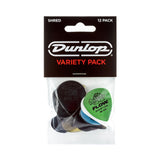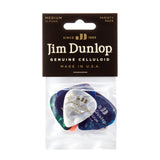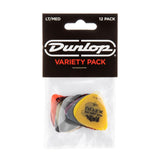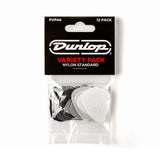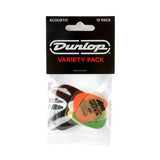The guitar pickup is the crux of any electric guitar, the point upon which your sound hinges. So before we get further into understanding how to wire our own guitars, it’s critical to understand how guitar pickups work and why they act the way they do.
In this new series we’ll be looking at all the crucial aspects of guitar wiring, with plenty of tips on how to start modifying your own circuits. By taking in and understanding all of the information in this guide, you’ll have all of the wisdom you need to wire pretty much any guitar circuit you like.
How Guitar Pickups Work
The process by which a guitar pickup works is called inductance. Electrical current is generated in a coil of insulated wire, which is then carried to your guitar amplifier. This signal is relatively weak by the time it reaches your amp and rarely exceeds more than 2 millivolts. The signal is then amplified through various gain stages in your amplifier until it reaches a threshold where it will drive your amp speakers.
A coil of insulated wire, in this case copper, is wrapped around a magnet which creates an electromagnet. When this electromagnet is in close proximity to a moving, ferrous material (i.e. your guitar string) alternating current is generated. This alternating current is then sent through your pots, capacitors, and switches, to your amplifier.
Guitar Pickup Parts
There are several guitar pickup parts that have varying purposes and whilst there are slight differences between single coils and humbuckers, for the most part pickups are composed in the same way.
Pickup Pole Pieces

These magnets come in a huge variety of shapes and sizes depending on the pickup design. They can also be made from a variety of materials, although the most commonly found ones are AlNiCo and Ceramic. The term AlNiCo comes from the family of alloys from which they are made, Aluminium, Nickel, and Cobalt and they typically give you a warmer and more musical tone thanks to their lower output. Ceramic magnets tend to offer a punchier tone with a lot more output and treble, which can lead some players describing them as harsh or brittle. That said, both Jeff Beck and Clapton used ceramic magnets so they can’t be all bad!
Pickup Bobbin

The bobbin or frame holds the pole pieces in place and comes in several different forms. Single coils bobbins typically hold their pole pieces in place by friction alone and the plates are usually made out of fibreboard or plastic in the case of cheaper pickups. Humbuckers on the other hand tend to have a plastic bobbin that’s moulded to accept adjustable pole pieces with screws or permanent ones, depending on the design of that particular pickup. They also have a metal frame, which is often made out of brass to keep the magnetic field unaffected.
Pickup Coil

The coil is wrapped around the assembly of the Pole Pieces and Bobbins to complete the electromagnet. The wire is very thin and hair-like which allows for many wraps, anything between 6000 to 8500 turns and even more in some cases. There’s a bit of a misnomer here between hand wound or machine wound, as the truth is all pickup wire is machine wound, it’s whether the wire is fed by a human operator or not that defines the hand wound or machine wound nature of it. Different pickups utilise different amounts of wire wraps, which affects the tonality of the guitar pickup. More wraps usually results in higher output whereas as lower numbers give you less output and a warmer sound.
The Difference Between Single Coil and Humbuckers
There are several differences between single coil and humbucking pickups, both in how they are constructed and how they are wired. Single coil and Humbucker pickups are able to be wired in different ways, owing to their construction and attached wire.
Single Coils

A single coil pickup has one coil that essentially acts as an antenna for hum and interference. You’ll often hear guitarists discussing something called 60 cycle hum which is a combination of RF interference and noise that is emitted by the vast majority of electric devices. Single coils will often pick this up due to their design, which can be lessened by good shielding and a few other wiring techniques, more of which later in the series!
Humbucker

A humbucker pickup improves upon the design of the single coil by adding a second coil that cancels the 60 cycle hum, hence the name hum-bucker! The get this effect, the two coils must have opposing magnetic polarity, and must be wired out of phase. The polarity refers to the pole’s electrification, which will either be positive or negative depending upon the direction they are wound in. When you put two magnets of opposite winding directions together, there is a cancellation of sounds that results in zero 60 cycle hum.
Pickup Wiring
Single coils and humbuckers differ ever so slightly in their wiring, which leads to varying achievable tone combinations depending on how your wire them up.
Single Coil Wiring

Single coils will have two lead wires, the black wire will be your ‘ground’ or ‘earth’ and the other wire, which can be coloured red, yellow, or white depending on the pickup manufacturer, is the ‘hot’ or ‘lead’ wire. Wiring a single coil pickup is relatively simple, as your ‘hot’ or ‘lead’ wire typically goes to the pickup selector, whilst the ‘ground’ or ‘earth’ wire goes to the ground. For now we just need to understand how it works as we’ll cover how to actually ground later on in the series.
To see some single coil wiring diagrams, check our Stratocaster and Telecaster Wiring Diagram pages.
Humbucker Wiring

Here things get a little more complex, as the majority of humbuckers will have 4-conductors as opposed to the two of the single coil. This isn’t just an extra consideration in terms of wiring, but also gives you more options for wiring in phase or out of phase as well as wiring in series or parallel. Traditionally humbuckers are wired in series and out of phase, giving a boost at the output stage as well as acting to cancel the hum but when you’re doing your own wiring, the world is your oyster is terms of wiring creatively for different guitar tones.
Polarity and Phase
By determining the coil’s polarity, you can ascertain various hum-cancelling combinations with your humbucking pickups, offering a variety of tones depending on whether the pickups are in or out of phase. A lot of humbucking pickups have the same type of pole pieces for both sets of coils, so you can often determine which is which by using another pickup to see if they repel or attract one another.
The tone of an out of phase pickup combination is nasal sounding and used for its distinctive flavour in various styles of music, but it’s important to note that when we refer to out of phase in terms of humbuckers, it’s not the same as the classic Strat-style out of phase sound. On a Strat the circuit is parallel rather than series, used in those ‘in-between’ positions of 2 and 4 on a standard 5-way pickup selector.
In Conclusion
Hopefully that was all loud and clear for you, but if it wasn’t we’d suggest going back over the article to further your understanding, as well as reading the articles in our 'Learn More' section to get a better overall view. By having clarity around the topics presented here, you’ll have a great bedrock to lay the foundations of your own guitar wiring as we move through this series. Keep an eye out for part 2 soon!
Learn More
Have a gander here at our favourite Guitar Switching Mods.
Your Guitar Potentiometers play a crucial part in your guitar wiring.
Learning all about Guitar Tone Caps will give you a well rounded view of your guitar wiring.












